With its tanginess of bold blue cheese flavor, blue cheese dressing remains a firm favorite for many of us, whether you like to drizzle it on salads or roasted veggies, or it is always the must-have dip for your Buffalo wings!
Although it is nice to make blue cheese dressing at home, many of us struggle to find the time and it can also mean an extra run to the grocery store or farmers market to buy blue cheese. So, the solution is to buy ready-made blue cheese dressing. In this post we take a look at some of the best store bought blue cheese dressings available as well as offer some guidance on what you should look for when choosing blue cheese dressing.Quick Comparison: Top 12 Best Store Bought Blue Cheese Dressing
1. Happy Belly Blue Cheese Dressing
Made with real blue cheese, the Happy Belly blue cheese dressing also contains chunks of blue cheese. This comes as a 16 oz bottle which is shelf stable until opened and should then be refrigerated.
Although this contains chunks of blue cheese, when used, it is a smoother dressing which also allows the taste of the blue cheese to come through.
This is free from any high fructose corn syrup (HFCS) and artificial flavors. It also comes with a satisfaction guarantee.
Some would prefer that this dressing was slightly thicker so it was better for dipping with rather than just as a dressing and although it does contain small chunks or crumbles of blue cheese some would have liked to have seen larger chunks.
Pros
Cons
2. Wish-Bone Chunky Blue Cheese Dressing
Made with aged blue cheese and buttermilk, Wish-Bone chunky blue cheese dressing comes in a 15 oz squeeze bottle which is shelf stable.
This is a creamy dressing with a good blue cheese tang which is ideal for dressings as well as for dipping wings although it can sometimes be on the thinner side for dipping. As well as being HFCS free, this is also gluten free and does not contain any artificial flavors.
Pros
Cons
3. Kraft Chunky Blue Cheese Dressing
Free from MSG (monosodium glutamate) and HFCS, the Kraft chunky blue cheese dressing is ideal for dipping or dressing. This comes in an easy pour 16 oz bottle and should be kept in the refrigerator once opened.
Made with real blue cheese this dressing is tangy with some sweetness and is a chunkier and thicker dressing compared to some other blue cheese dressings. As it is chunky, occasionally a chunk of cheese may get stuck, so a little effort is needed to clear the blockage!Pros
Cons
4. Walden Farms, Bleu Cheese Dressing
The Walden Farms Near Zero bleu cheese dressing is a sugar, carb and calorie free blue cheese dressing. Coming as a twin pack of 12 oz bottles, this dressing is also free from dairy, gluten and any GMO ingredients. It is also kosher.
This dressing does have more of a subtle blue cheese flavor, especially as it does not contain any real blue cheese – just blue cheese flavor - and it is also a smooth dressing. As it is thinner may not work as well for dipping with. It also comes in glass bottles so there is more risk of breakage.Pros
Cons
5. 365 Whole Foods Market Organic Blue Cheese Dressing
The certified USDA organic 365 Whole Foods Market organic blue cheese dressing is also suitable for vegetarians. Coming as a 16 oz bottle, one serving contains 80 calories and is shelf stable until open.
The odd buyer has found the blue cheese flavor a little on the light side and some also consider its consistency to be more ranch-like than blue cheese.Pros
Cons
6. Ken’s Steak House Chunky Blue Cheese Dressing
The Ken’s Steak House chunky blue cheese dressing is gluten free and contains only 1 gram of carbs per serving. This is available in 16 oz bottles and can be stored in the pantry until opened and should then be refrigerated.
This is a chunky blue cheese dressing, and its creamy and thicker consistency makes it ideal for dipping wings as well as for dressing. The odd buyer has been disappointed to find this does not taste quite the same as the restaurant’s blue cheese dressing.Pros
Cons
7. Briannas Home Style Blue Cheese Dressing
Available as a six pack of 12 oz bottles, Briannas Home Style blue cheese dressing is a creamy and thick dressing suitable for dipping as well as dressing.
This does contain pieces of blue cheese, but small pieces rather than larger chunks. It does not contain any HFCS and is suitable for gluten free and vegetarian diets.Pros
Cons
8. Uncle Dan's Bleu Cheese Dressing
Available in 1 oz packets, this is a shelf stable powder mix that you can use to make 16 oz of blue cheese dressing by mixing a packet with one cup of buttermilk and one cup of mayo. The dressing can also be mixed up with Greek yogurt, low fat sour cream and more – making it easy to reduce the calorie or fat content of the dressing. Once made, it should be left to stand for a few hours before using. It can also be used as a dry powder in marinades and more.
This does not contain any added MSG and is also free from gluten.Pros
Cons
9. Kraft Roka Blue Cheese Dressing
The 100 bulk pack of Kraft Roka blue cheese dressing (single serve) is a shelf stable dressing that does not need to be refrigerated. Easy to carry around for meals on the move or just for easy serving control, this is a smooth dressing with a distinctive and balanced flavor.
Although it does contain real blue cheese, this dressing may not have as much blue cheese flavor as you would like and as it is only single serve packets, it is not as budget friendly as buying a regular sized bottle of blue cheese dressing.Pros
Cons
10. La Martinique Blue Cheese Vinaigrette Dressing
Created in France, La Martinique blue cheese vinaigrette dressing is a blend of oil, vinegar and spices with hand crumbled chunks of blue cheese.
This is shelf stable but should be refrigerated once open and will need a good mix before using. This is a premium blue cheese dressing which is available in 10 oz glass bottles and is better used for dressing rather than dipping.Pros
Cons
11. June Moon Spice Company Blue Cheese & Chives Dressing
The June Moon Spice Company blue cheese & chives dressing is a premium dressing made in small batches without any artificial colors. Made with blue cheese, chives and a little apple cider vinegar this is suitable for using for dipping as well as dressing with.
Available in a 12 oz bottle this also contains a double freshness seal to help keep the flavor in. This is shelf stable when bought but should be refrigerated once opened.
This may not be as thick as you would like and as a premium dressing is more expensive than other blue cheese dressings.
Pros
Cons
12. Daiya Blue Cheeze Dairy-Free Dressing
The dairy free Daiya blue cheeze dressing is a plant-based dressing which is free from any GMO ingredients. It is also gluten and soy free making it suitable for a range of diets.
This can be used as a dipping sauce as well as dressing and it has a creamy and thick texture, in fact, it is so thick that sometimes it may need to be scooped out rather than poured out! This comes in smaller 8.36 oz bottles.
Pros
Cons
Things to Consider Before Buying Store Bought Blue Cheese Dressing
Although homemade fresh blue cheese dressing can be amazing, if you don’t always have blue cheese in it is easier to keep store bought dressing to hand. It can also cost a lot less to use store bought than to make your own from fresh – helpful if there are members of your family who need to add blue cheese dressing to almost every meal!
Freshly made blue cheese dressing also has a short shelf life while store bought can just go back in the refrigerator and stay there for a while – if of course it lasts that long in your home. It must also be said blue cheese dressing will not smell the refrigerator out in the same way that a big chunk of Maytag will!
Store bought blue cheese dressings are made with a variety of ingredients, but most will have some form of dairy, such as milk or buttermilk along with real blue cheese, or in some cases, blue cheese flavor.
When choosing a dressing, look for those that have blue cheese listed higher up in the ingredients list as this means the dressing contains more blue cheese. It will also contain flavorings such as garlic powder, onion powder, hints of spice and a little vinegar. Be wary of dressing that are made with herbs or spices that you wouldn’t add to a blue cheese dressing at home as these may change the flavor too much.
Blue cheese dressing will also contain an oil or fat. Those made with canola oil can oxidize faster than other oils, taking on flavors of the other ingredients, so this is another thing to consider when comparing dressings.
Blue cheese dressings can be smooth or chunky. Chunkier dressings usually contain chunks of blue cheese for an extra burst of flavor, but if you only have smooth to hand, then you can just add some blue cheese crumbles or small chunks of fresh blue cheese to the dressing for extra texture (and flavor!).
Chunkier dressings are often thicker and better for dipping with, or if you do want to drizzle a thicker dressing, you can dilute it down with a little sour cream, Greek yogurt or similar.
Blue cheese dressings packaged as a traditional dressing are often thinner, making them better for finishing salads and other foods rather than for dipping with.
Some store bought blue cheese dressings can be high in sugar. Ignoring dietary reasons, the higher sugar content means the extra sweetness will take some of the tang out of the blue cheese. Also be careful with those that contain added salt as blue cheese is already higher in sodium compared with other cheeses.
There is no real difference between shelf stable or refrigerated dressings, in fact shelf stable dressings can be an advantage as they keep for longer. Many store bought dressings are shelf stable until they are opened, at which point they should then be refrigerated, but always check the label for the correct storage temperatures.
Safety and Pasteurization of Store Bought Blue Cheese Dressing
Blue cheese is one of a number of foods that should be avoided by those who are pregnant. This is because blue cheese is often unpasteurized. However, store bought blue cheese dressings are usually pasteurized and it will state this on the label of the bottle or packet mix.
If a blue cheese dressing is made with pasteurized blue cheese then those who are pregnant who are struggling to cope without blue cheese or blue cheese dressing in their diet may be able to eat a little pasteurized store bought blue cheese dressing . This is because the pasteurization process kills Listeria bacteria – the cause of a foodborne illness that is especially dangerous to unborn babies.
It is always safer to discuss eating blue cheese dressing with a medical professional first though.
Those who are allergic to penicillin also need to take care with blue cheese dressing although people can be allergic to different strains of penicillin. This means that someone may not be able to take penicillin, but they may still be able to eat blue cheese or blue cheese dressing without having a reaction.
For those who are pregnant or allergic to penicillin, another option is to buy a blue cheese dressing made with blue cheese flavor rather than blue cheese. These dressings are usually suitable for those on a dairy free/vegan diet also.
Just A Few Ways to Use Blue Cheese Dressing
If you only use blue cheese dressing occasionally or are looking for some different ways to use it, here are just a few of the great ways to enjoy it!
Traditionally used as a salad dressing, blue cheese dressing goes well with many types of salad, not least Cobb. It will add flavor to cold, or even grilled, meat, vegetable or cheese sandwiches and wraps or you can mix it in with sides such as potato salad or slaws.
Wings are probably incomplete without blue cheese dressing on the side or if you prefer a meat-free option, then why you can also add a dairy or a dairy free blue cheese dressing. It also makes a good dip for pretzels or even just chips.
Blue cheese dressing is great on burgers, grilled chicken and grilled or roasted vegetables as well as baked potatoes. You can also add some flavor to traditional mac and cheese along with many other pasta dishes.
Blue cheese dressing can be used as a spread or mayo substitute and it can even take the place of sour cream in dips, dressings and more. It is also useful in marinades for meats and vegetables but if you do want to use it in a marinade, keep to milder flavored foods such as chicken or eggplant.
How Did Blue Cheese Become Blue Cheese Dressing?
Blue cheese is any cheese that has blue mold and veins. A blue cheese can be made from cows’ milk, ewes’ milk or goats’ milk. A blue cheese can vary in strength. It can be a mild blue cheese, such as Danish Blue or strong, such as Roquefort or Maytag. Generally, the longer a blue cheese is aged or matured, the stronger it will become.
Although the molds used differ depending on where the cheese is made, blue cheeses are all made in a similar way; either the mold is injected into the curds or the cheese is pierced with rods which then allows Penicillium mold to enter into the cheese and grow.
Roquefort cheese can only be made from Lacaune, Basco or Manech sheep and aged in the Combalou caves in Roquefort-sur-Soulzon in France as these caves are the only source of the mold Penicillium roqueforti or P. roqueforti.
How blue cheese evolved into blue cheese dressing is uncertain. Although salads were eaten by the Ancient Greeks and Roquefort blue cheese was being made in France during the Roman occupation, it was sometime later that the two came together!
It is doubtful that blue cheese dressing came about in France as vinaigrettes were the preferred type of dressing for salad and a cheese such as Roquefort would not be ‘reduced’ to an ingredient in a salad dressing as it was (and still is) very much a food in its own right.
Roquefort was available in the US in the 1850s although at this time, salads were dressed with dressings thickened with eggs. Over time, dressings began to involve into ‘French dressings’ and recipes for these were published in the Boston Cooking-School Cook Book of 1896 by Fannie Farmer. However, none of these recipes contained Roquefort or any other type of blue cheese.
By 1915, as commercialization and processes evolved, mayonnaise was available on grocery store shelves and this also opened the door to shelf stable salad dressings such as Ranch dressings. This also corresponded with a rise in popularity of green salads. Starting first in California but then spreading across other States, green salads became a key food in luncheons served in tearooms.
In 1928 the Edgewater Beach Hotel Salad Book published recipes for a variety of salad dressings, including Roquefort dressing, so somewhere before this, the use of blue cheese dressing had become popular. However, before that, in 1911, chef Rufus Estes, who was chef to two Presidents, published a recipe in his cookbook which used olive oil, grape juice, grape vinegar, pepper, paprika and Roquefort cheese to make a Trianon Salad dressing!
Conclusion
Although blue cheese dressing has only been around for a century or so, in its short lifetime, it has still managed to become one of the most popular dressings around. Keeping store bought blue cheese dressing in is the easiest way to make sure you always have some to hand for dressing or dipping with. It can also be easier on the budget; especially if a bottle of blue cheese dressing comes out with most meals!
We hope you have enjoyed reading our article on blue cheese dressing and that we have provided you with the information you need to choose the best store bought blue cheese dressing for your salads, wings or roasted vegetables!
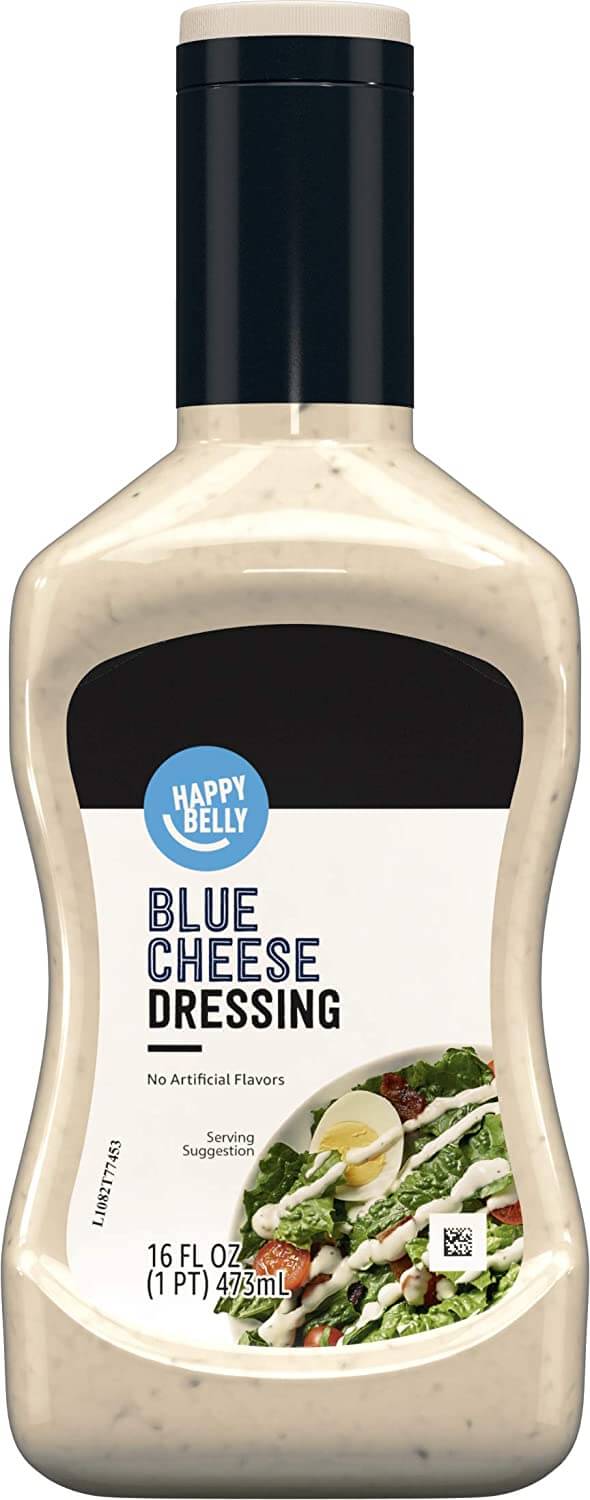
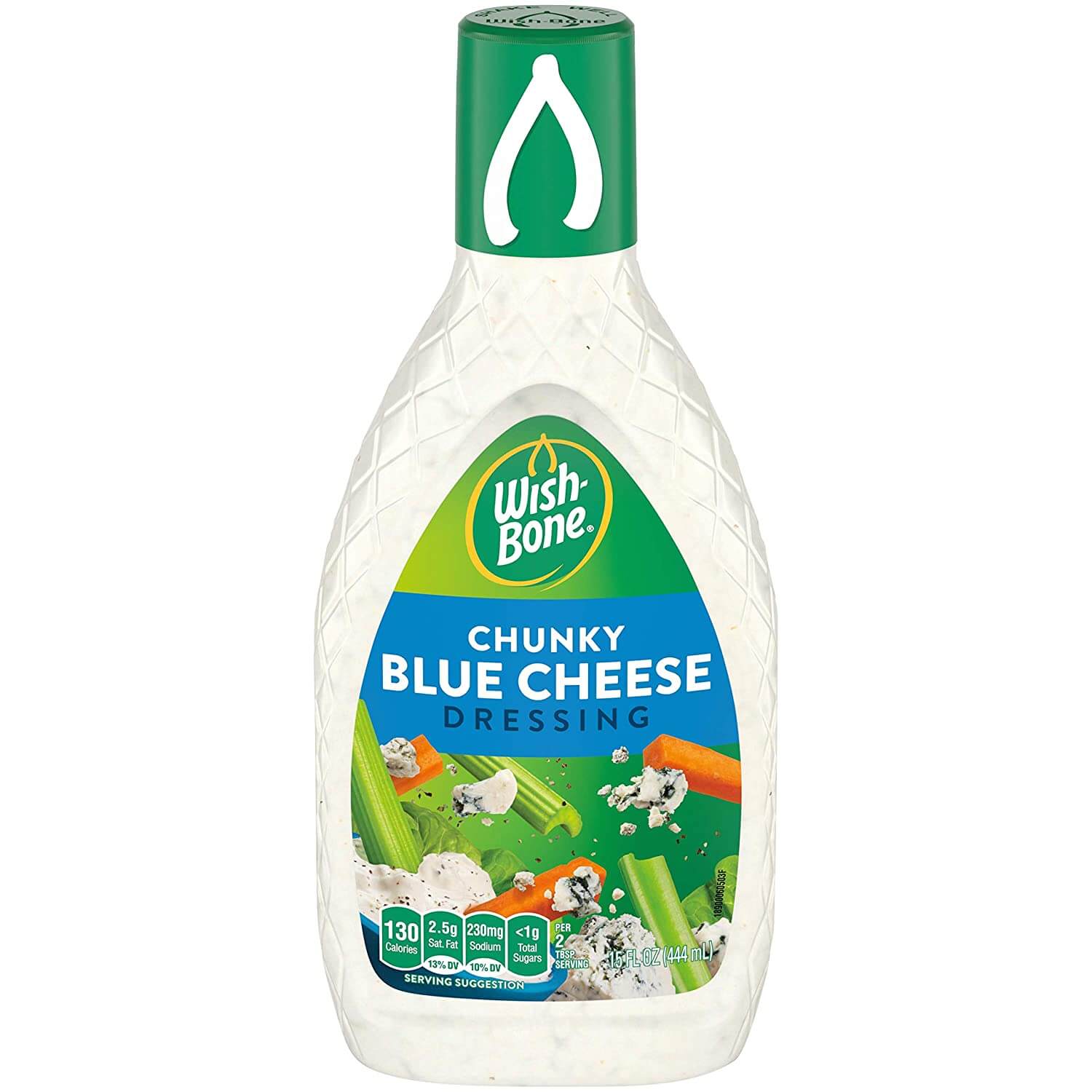
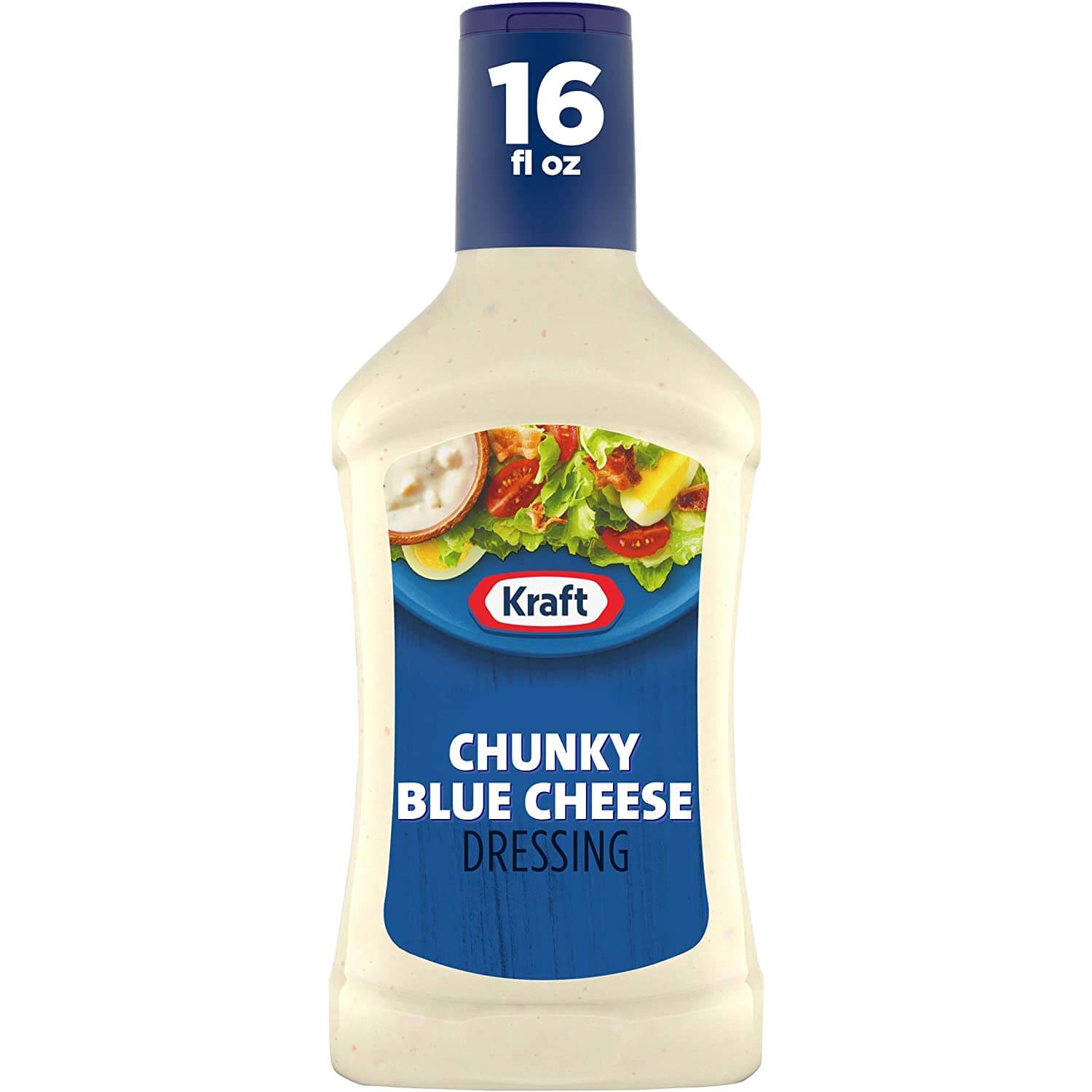
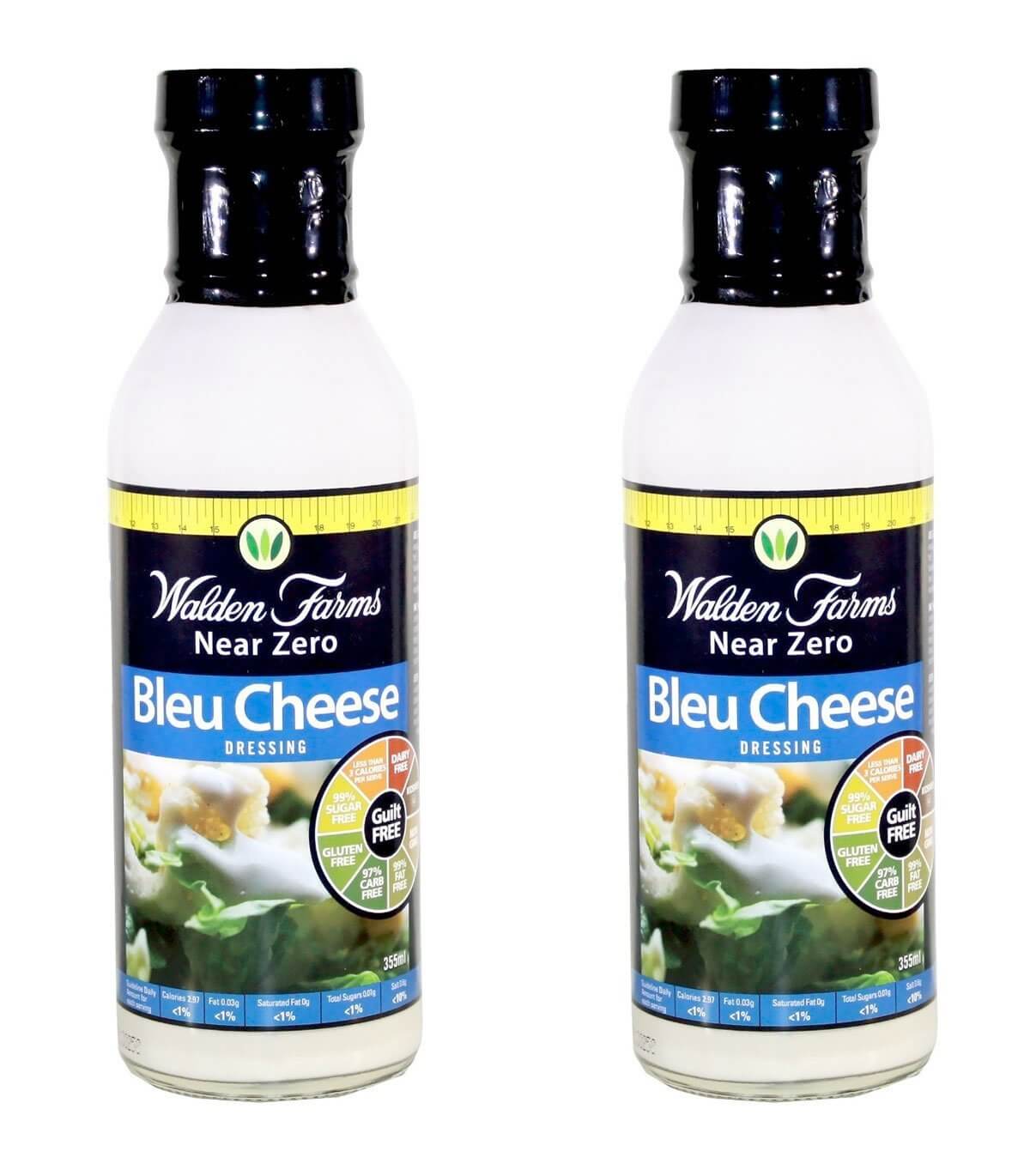
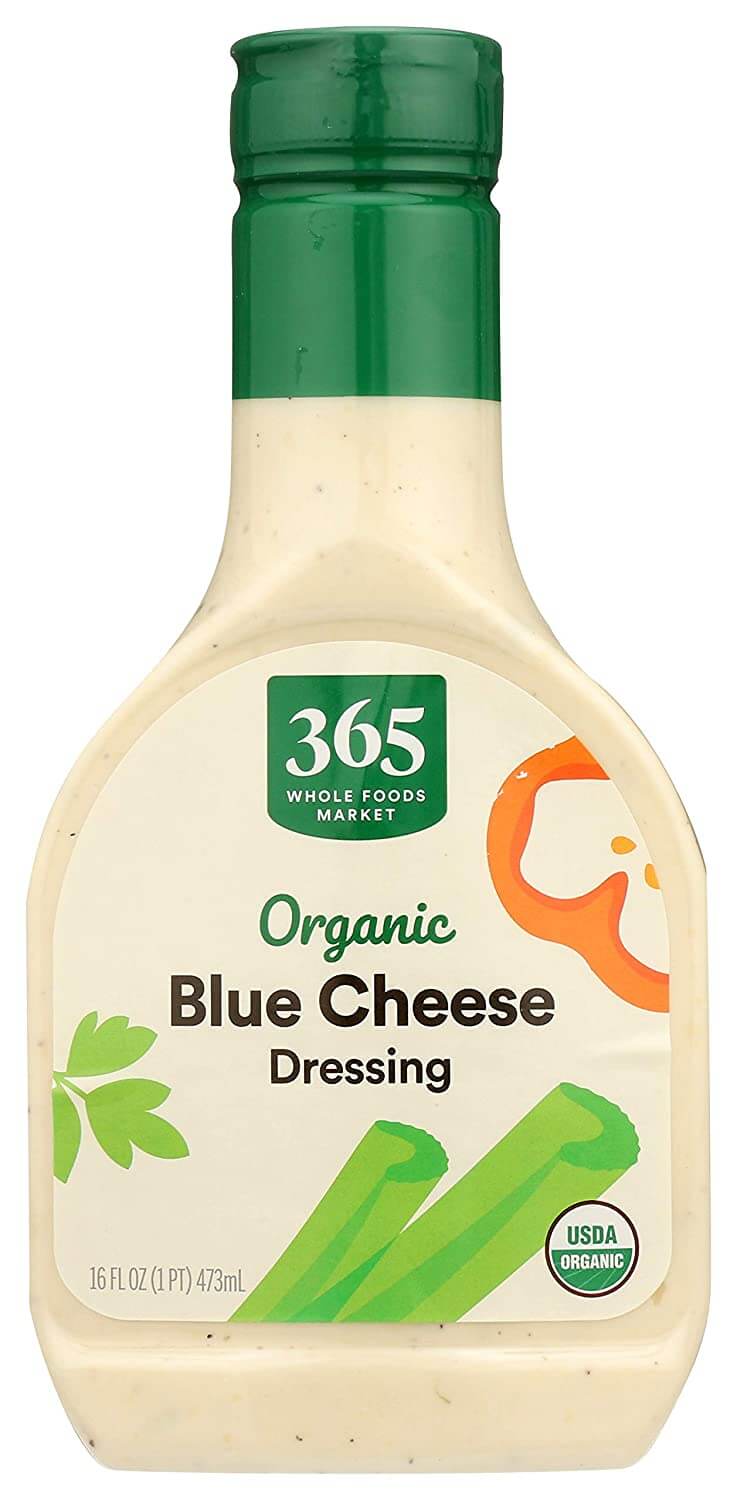
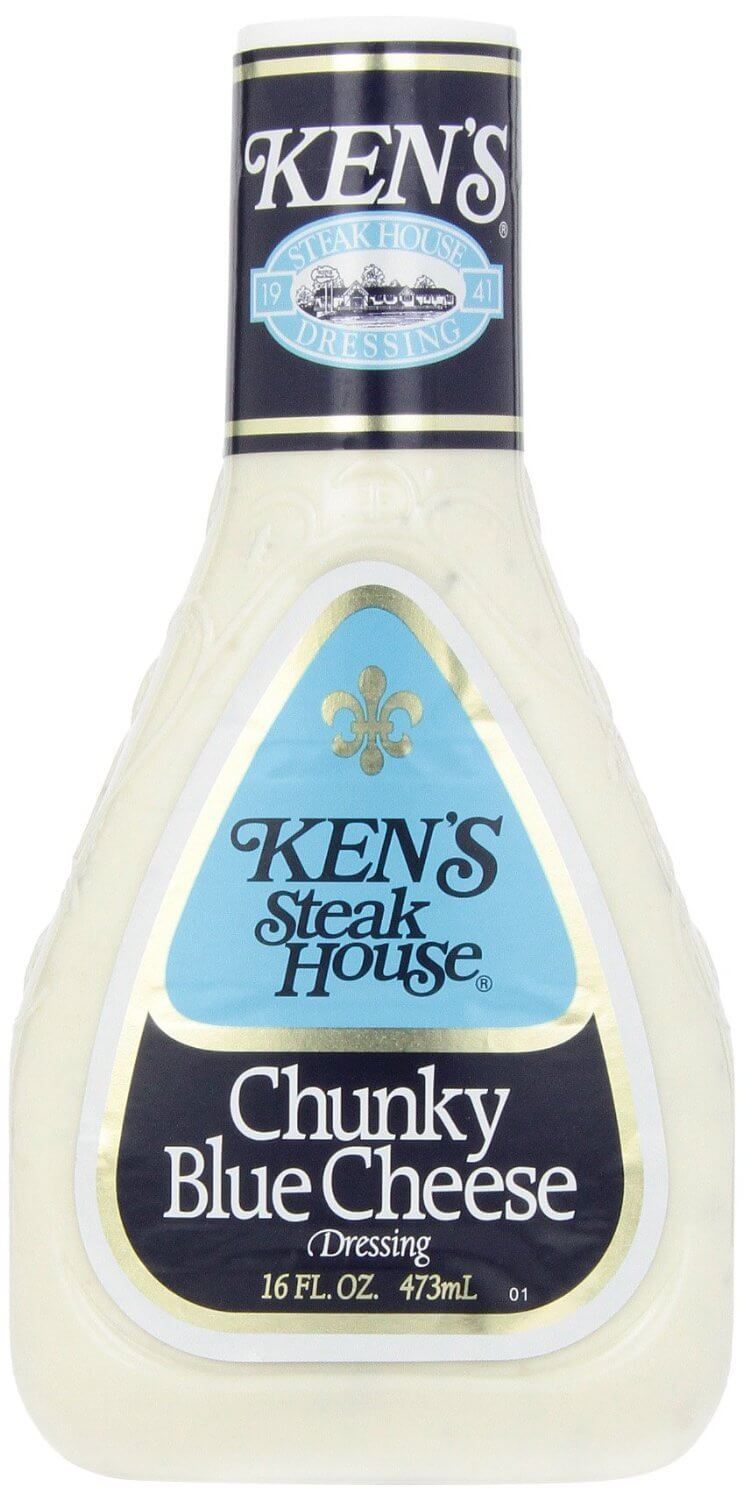
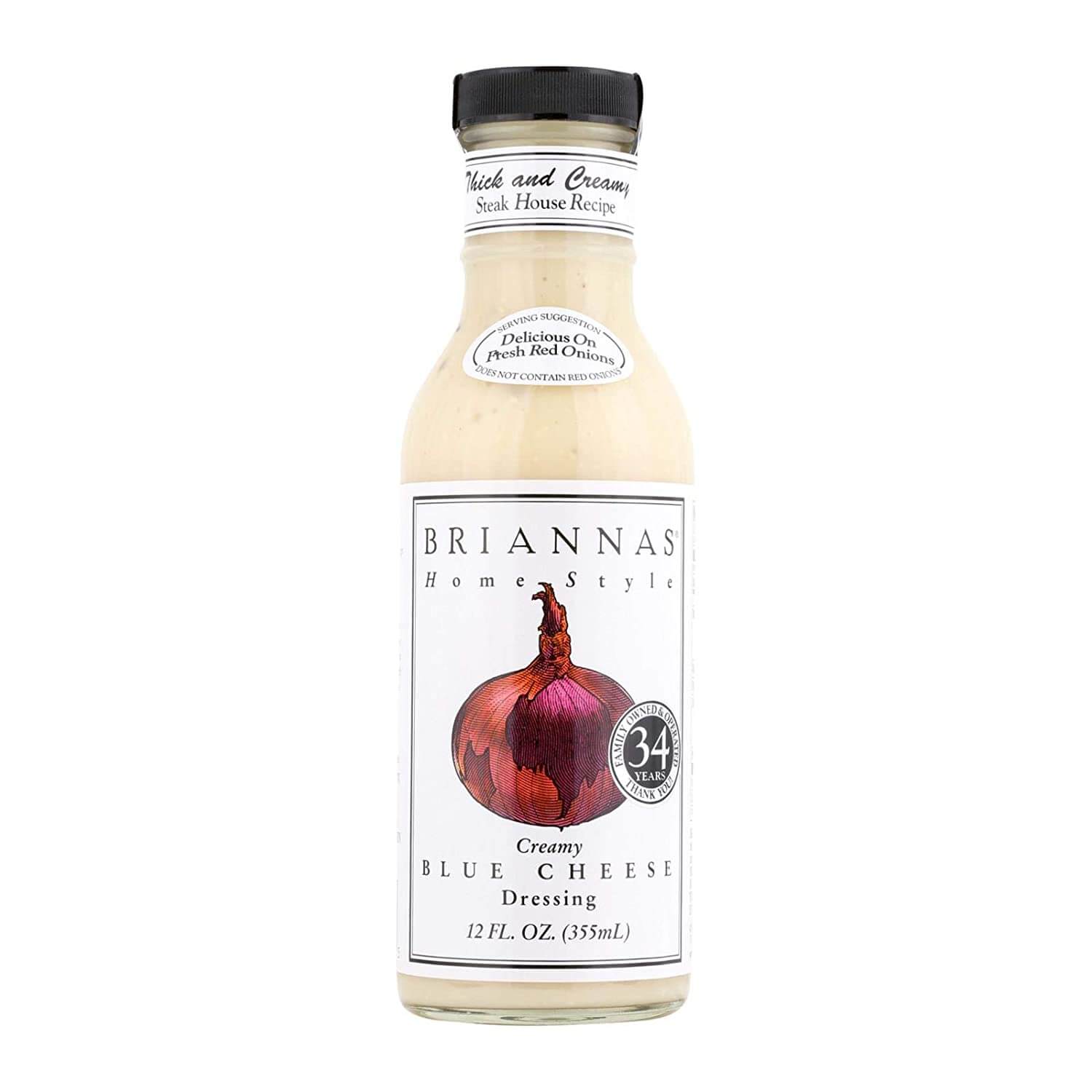
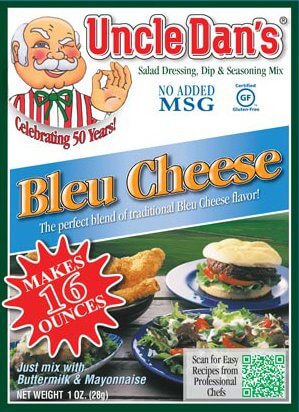
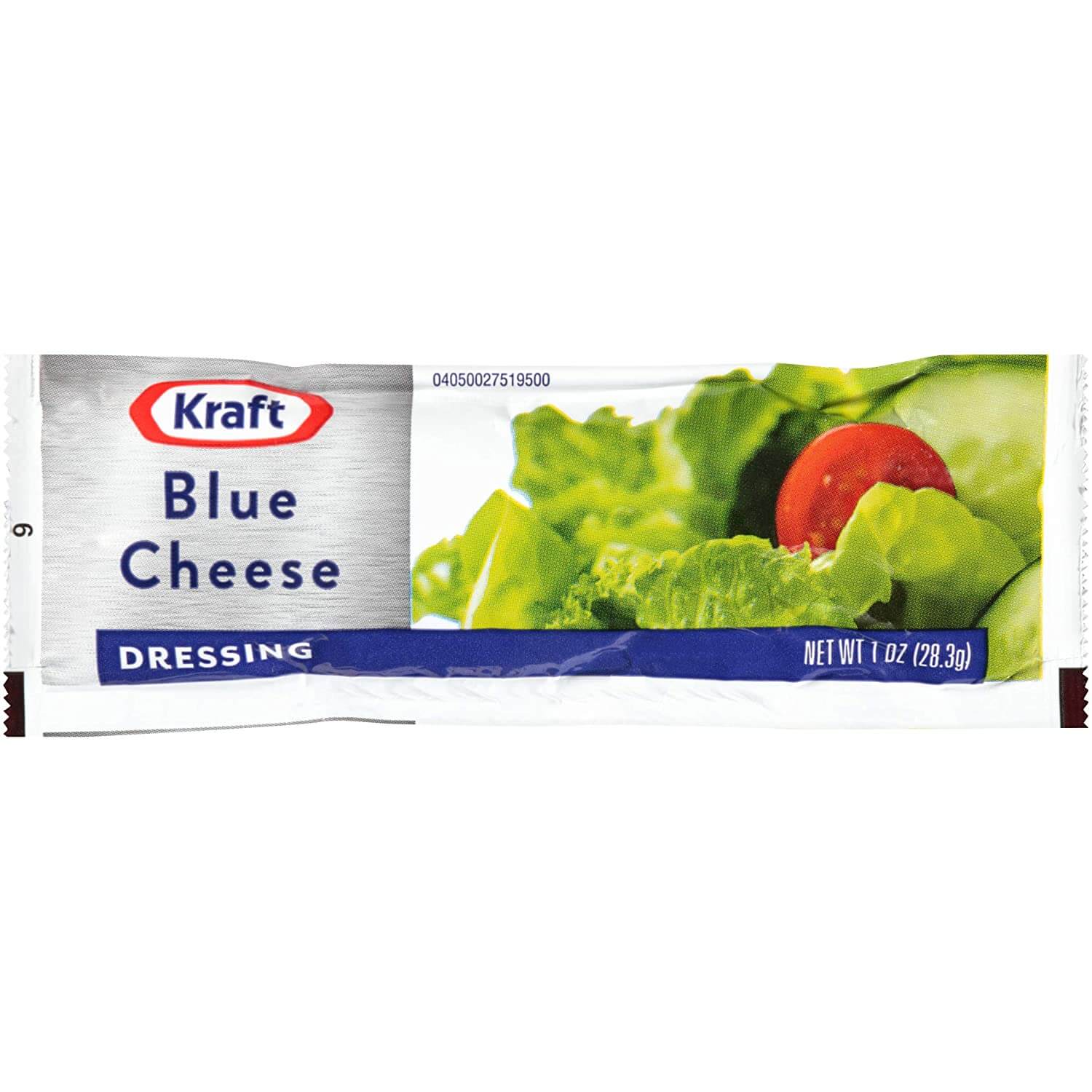
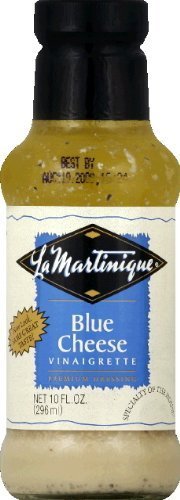
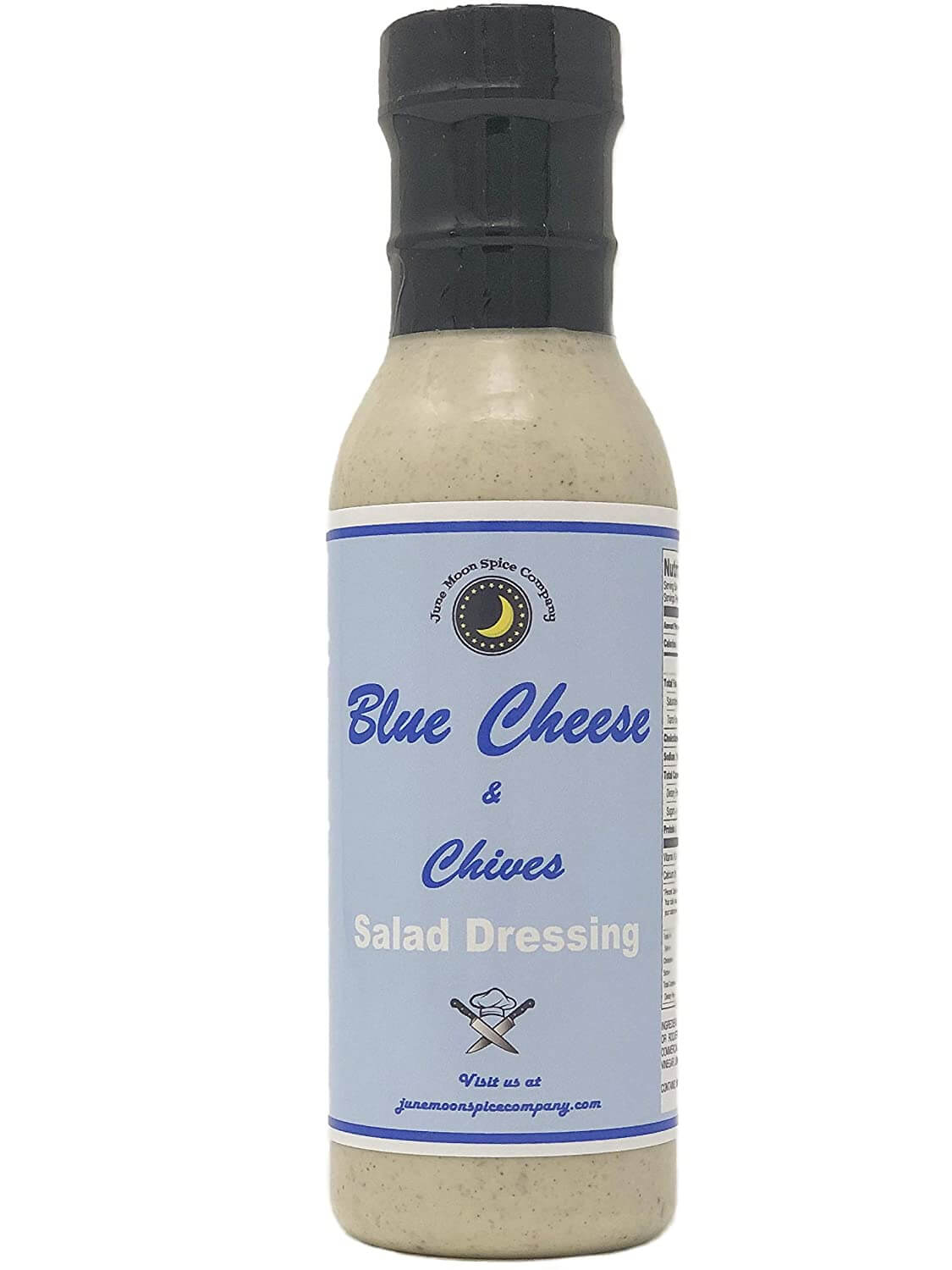
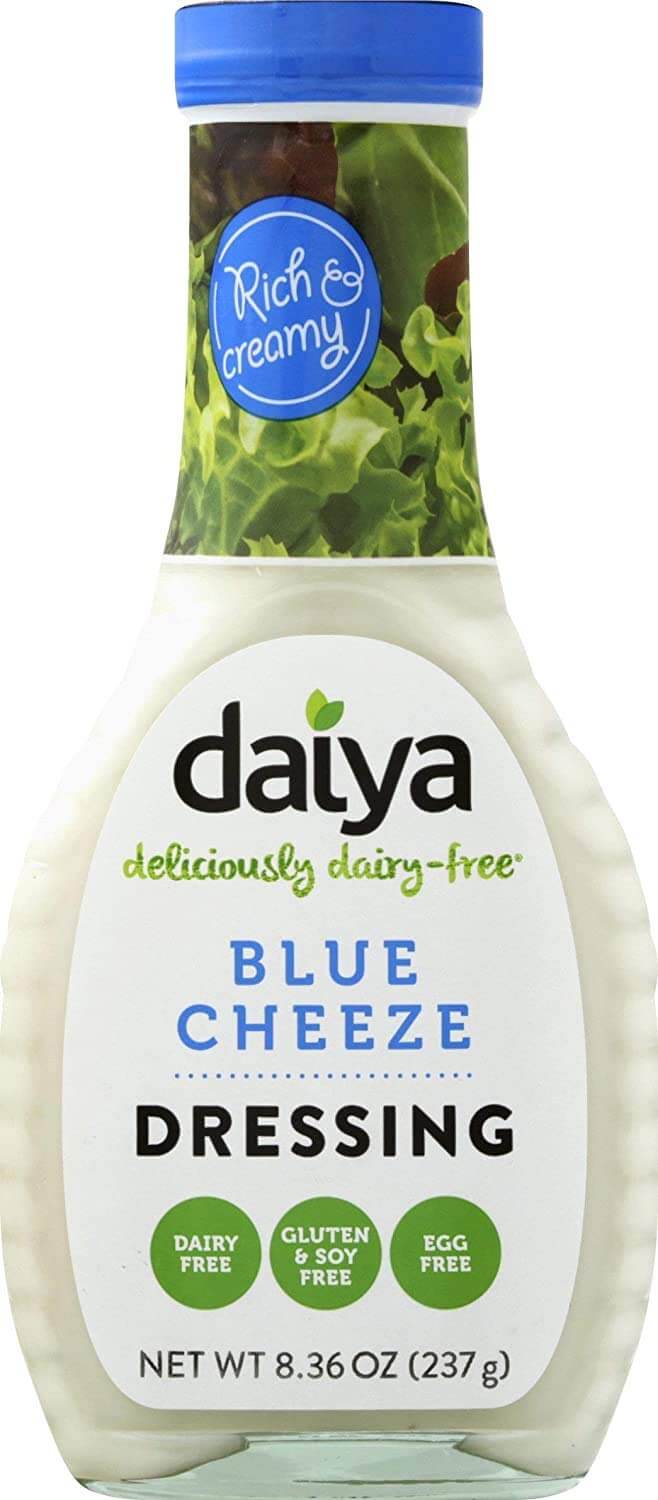

Related Posts
Red Potatoes vs. Russet Potatoes
Digestive Biscuits vs Graham Crackers
Chai Latte vs. Chai Tea